Kate Waldron
It has now been over three months since the beginning of lockdown, and it goes without saying that things have been hard for everyone, whatever the individual circumstances. For conservators it is a trying time, given that so much of our work revolves around practical treatments of objects. My heart goes out to all freelancers in the field and for everyone midway through their higher education training and early career positions, for whom the timing could not have been worse.
In light of all the difficulties we all face, I have been heartened by all that I have been seeing and reading on the importance of art for our mental wellbeing and a way of escaping or finding comfort. Many museums, including the Fitzwilliam in Cambridge, have been closed of course, but in some ways museums and galleries have become more accessible than ever, with more of their collections available to peruse online and lots of virtual events and resources. I liked the series of ‘Stay at Home Museum’ YouTube videos by VisitFlanders, particularly the one from the Rubenshuis Museum in Antwerp. Closer to home, Kettle’s Yard in Cambridge also rose enthusiastically to the challenge of a virtual visiting experience and their website has lots to offer; I particularly enjoyed their series of interviews with artists whom they have worked with before, to hear how they have responded to these unprecedented times, and the live webcam inside the house – thanks to Jo for discovering and sharing that!
I want to take the opportunity to share how we at the HKI have been affected by the recent events, to offer a glimpse of what life is currently like for an institution of paintings conservators. When lockdown began, most of the staff and all of the students and interns were told we had to work from home until further notice. This meant we had to pack up our projects and the paintings we were working on, and begin the slow adjustment to working remotely, from our homes – and for two of our number this involved travelling back home to Austria and Colombia respectively. Most of our time at the HKI is spent working on paintings in the studios, and I found it daunting to think it could be months before we were able to return to carry on with that work. But it is easy to forget that there are MANY other things that conservators do besides practical work! I have found that lockdown has been an opportunity to focus on documentation, research, and virtual learning, and in this post I will talk about some of the things I have been doing. In the next post, I hope to share stories from some of the other interns and students – and even some of the staff members!
Documentation
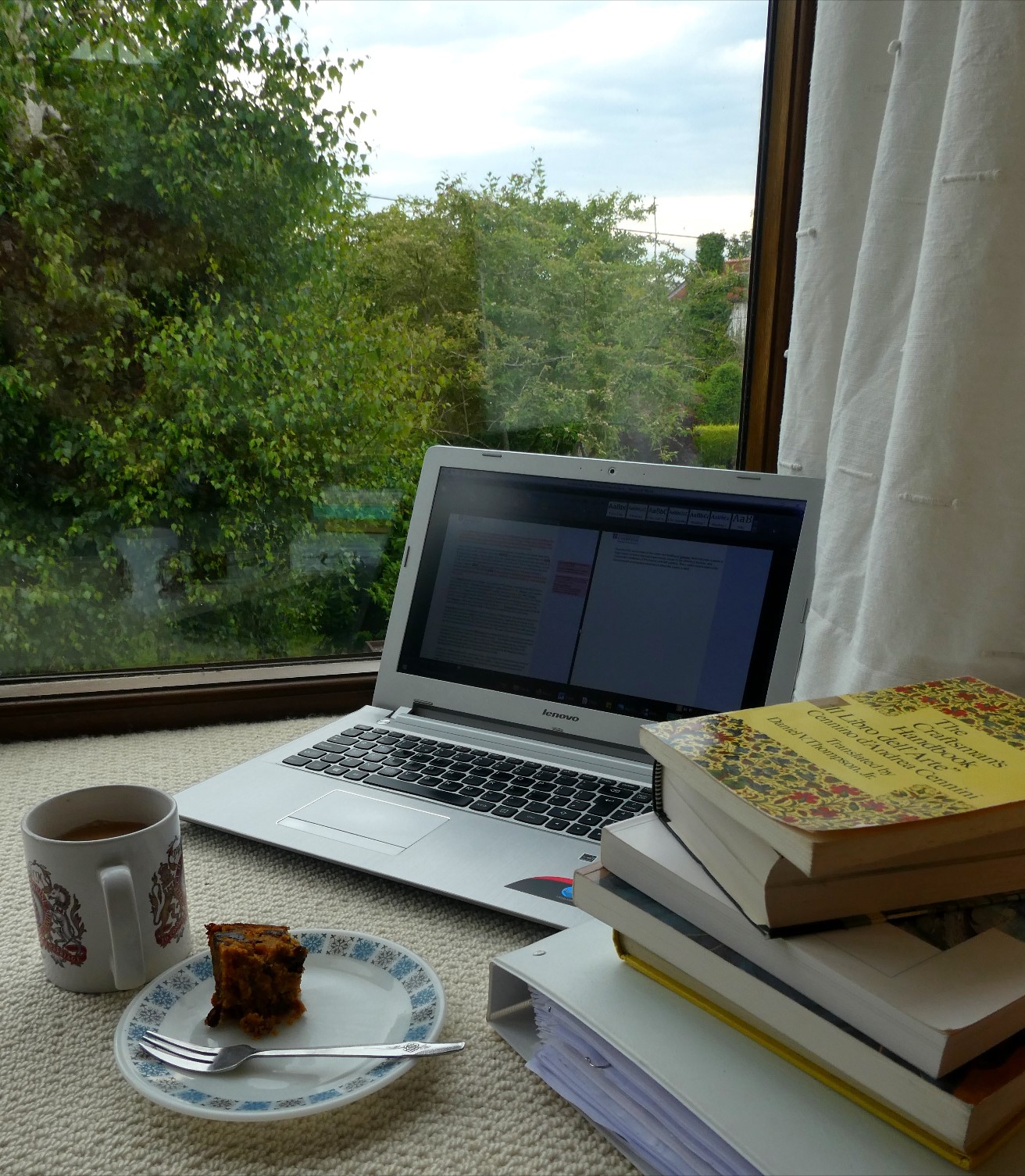
One of the things I have been up to is catching up on documentation for the paintings I am treating. This is always ongoing and updated at every new stage of the conservation treatment, and for me it involves going through all the latest jottings in my studio notebook and writing them up into something coherent. In the knowledge that it could be months before I see the paintings again, it is especially important that the documentation is up to date at this stage!
One of my projects involved making a thorough treatment proposal and estimate for future conservation work. This is for a large set of painted objects in a rural church – something quite different from your ‘typical’ easel painting that one would treat in the HKI studio. So, it was far from straightforward and I have actually been very grateful to have this time during lockdown to think carefully about the appropriate potential courses of action, the ethical issues surrounding these decisions, and all of the fiddly logistics and timeframe – not to mention the maths involved in the costing process! Writing estimates is a task that interns at the HKI are very fortunate to gain experience in. It can be difficult to anticipate how long each stage of a proposed treatment might take, especially as this is usually based on only very tiny tests on the object (or none at all in this case). So I was really glad to have time to focus on this and get it as accurate as possible, with my supervisor’s help. Hopefully, with the more estimates I write the easier it will become!
Research
Something that has been really exciting for me to work on is a paper for the HKI Bulletin. We are spoilt at the HKI as we have our very own journal, published biennially, to which students, interns, staff and associates can contribute articles . The articles span a range of topics and often focus on interesting treatments or research that students and interns carry out during their training at the Institute. My paper was about a treatment of a painting that I completed in my first year, during which the Roberson Archive at the HKI turned out to be a really important resource for finding out about the artist’s materials and techniques and informing the treatment decisions. This was such a good experience of writing for an academic journal and all of the steps involved – particularly the editing process and obtaining image permissions. The staff putting together the current issue and doing all of the editing have an even bigger task than usual, being a reduced team and having to do everything via email, which is not easy when dealing with multiple drafts and juggling images and captions. So, huge hats off to them.
We have also been able to continue sharing with each other the research that we are all doing. In normal times at the HKI, we hold a ‘research forum’ once every academic term, when a number of people sign up to each give a small presentation on a recent or ongoing research project. During lockdown we have altered the format by having a research presentation every Wednesday afternoon from a different person each week.
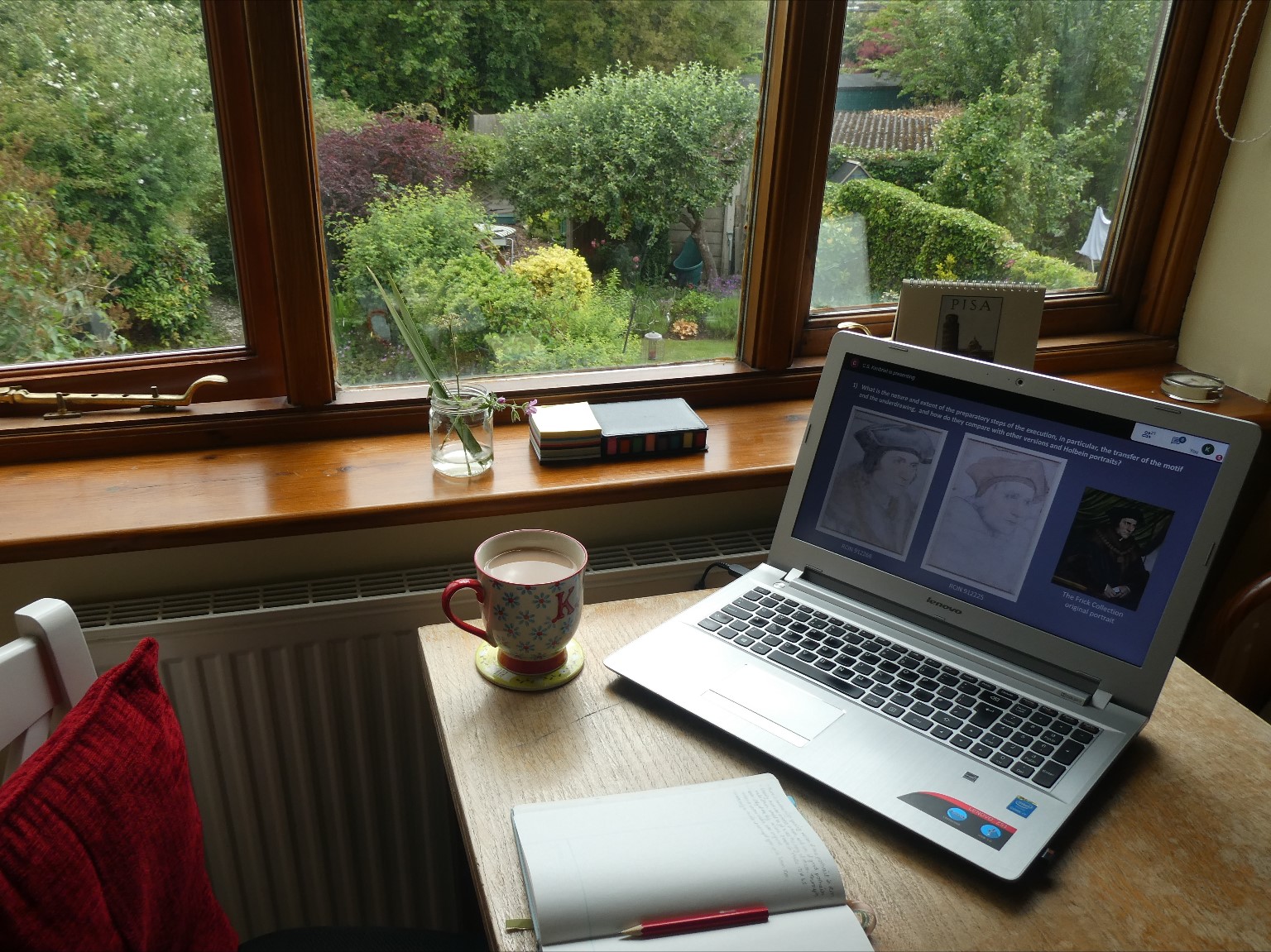
This has been fantastic, not only to keep practicing our presentation skills but to keep up with everything that is going on – we were so used to catching up with each other daily in the studios, asking how projects are going or interrupting someone during practical work to ask what they’re doing if it looks interesting!
We are lucky indeed to have the IT support and resources to do all these things via various online video platforms. It is bizarre presenting to a screen (I found that when I was giving my presentation I had no idea if my audience was even still there, especially given the patchy performance of my internet).But it is such a comfort just to see familiar faces, and the discussions after the talks almost make me forget that it is all through a screen and not back in the library at the HKI.
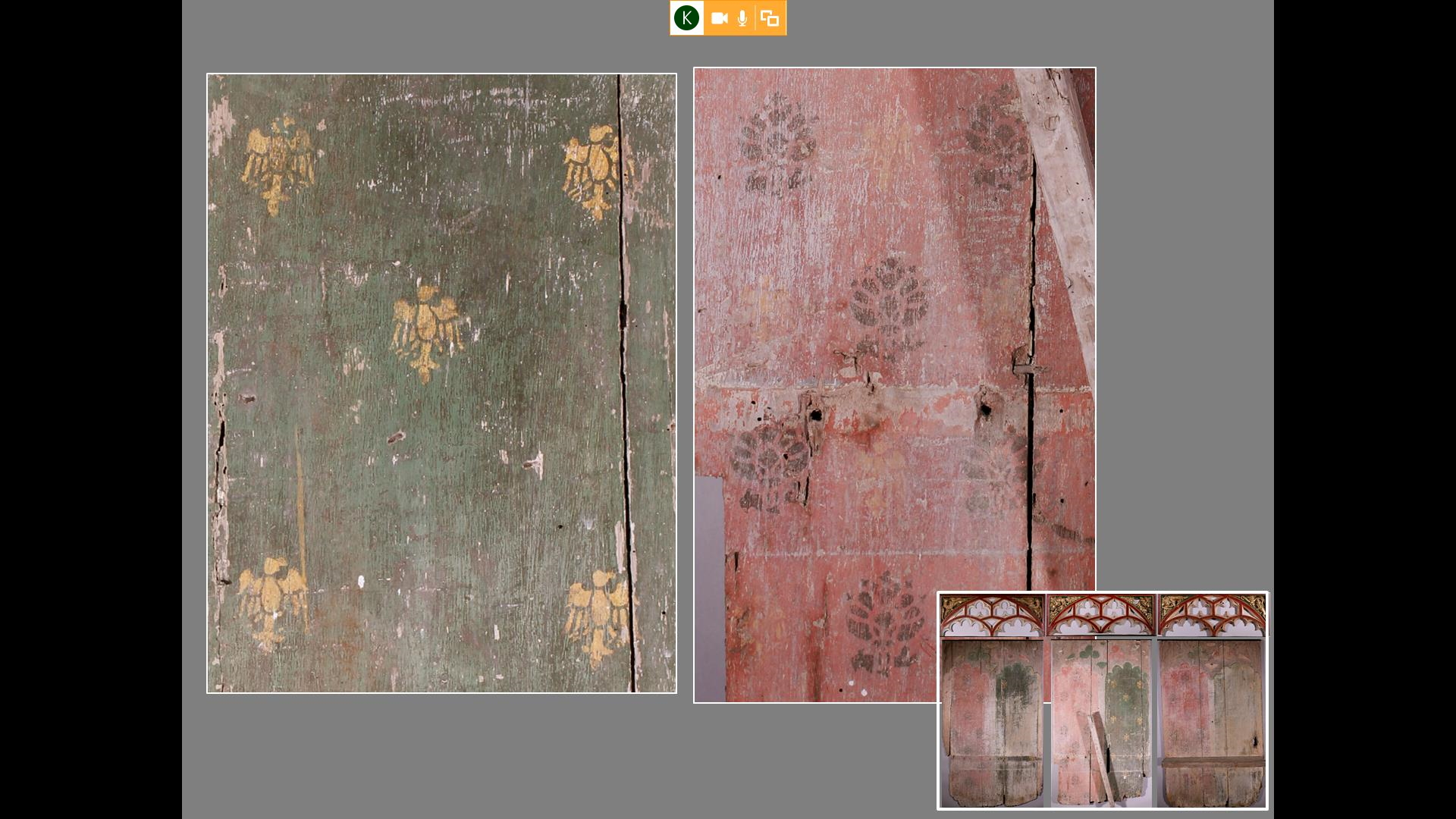
We have also managed to continue with our weekly coffee meetings on Tuesdays, for more informal discussions: we have had re-jigged the time slightly to make sure that no poor person has to get up in the middle of the night to join in from their part of the world, and it remains the good old opportunity to catch up with the latest developments and upcoming events in the collective diary – albeit slightly fewer than usual – and exchange anecdotes about the quirks of working from home. There is even a conservation book club, which sadly I have not been able to attend just yet, but from what I have heard I am missing out massively so I hope to join it soon.
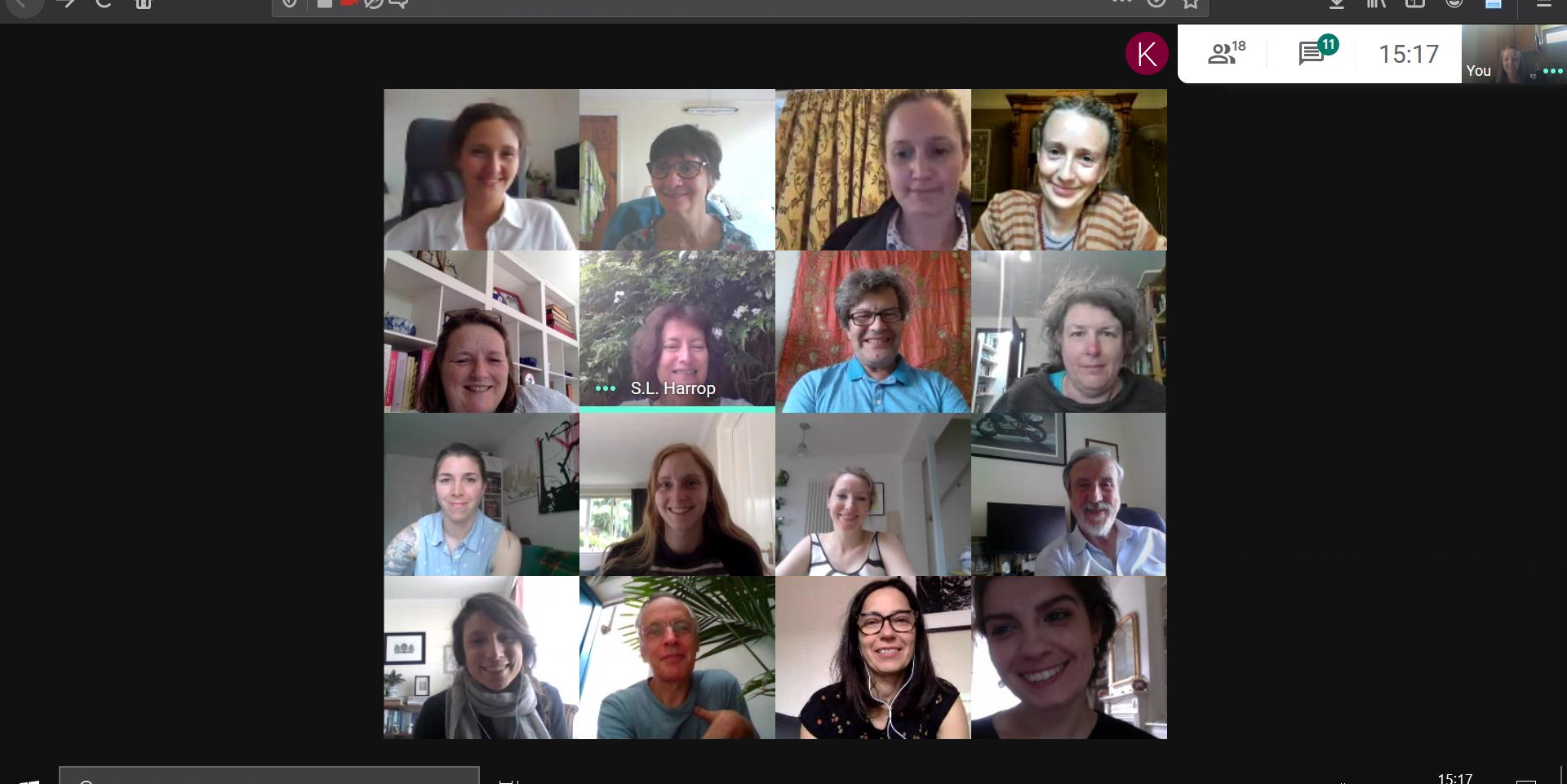
Extra learning
We have all been enjoying the abundance of webinars and online lectures that have become available since lockdown began. One thing that the students and interns were able to ‘attend’ was a two-week workshop, for professionals and trainees in conservation, on new methods being developed for cleaning paintings and other cultural artefacts. Although we have all been introduced to these already in our training, it is always good to have a refresher and especially to be kept abreast of the latest developments in the field, as technologies are advancing all the time. On that note, I was just in awe of the extraordinary ability that there is now to bring hundreds of people together from all over the world, many in different time zones, for a shared workshop – but mainly for my computer not to crash at the time.
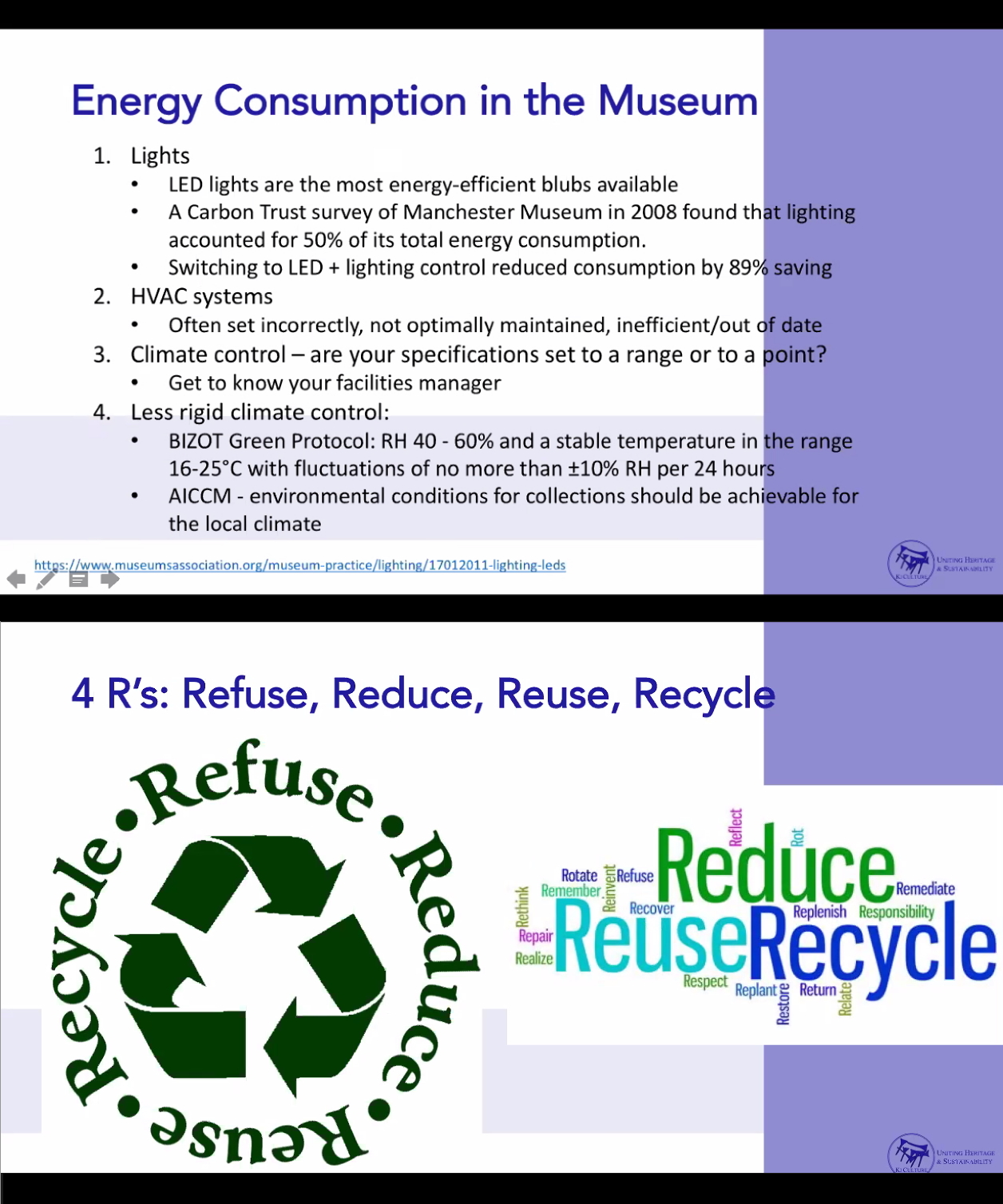
Another course that I found very fulfilling was a set of webinars about sustainability in cultural heritage and conservation, which were run by Caitlin Southwick of Ki Culture. These covered topics like energy and waste, and explored not only how we can incorporate sustainability into our daily practice as conservators but also how our profession fits into the bigger picture of cultural heritage and sustainability goals on a global scale. The webinars involved stimulating discussions with a group of like-minded people from around the world, and it was enlightening to hear about their experiences of sustainability in their own workplaces.
All of this has made me critique my own practice and realise that there are many simple ways that I can improve in my work, lifestyle and thinking. I feel lucky that at the HKI and Fitzwilliam Museum, there are already conversations being had around some of the issues covered. I was also introduced to the subject of social sustainability, a term that was new to me and refers (in a very brief and inadequate summary) to the bringing together of communities, working with each other despite geographical, social and political barriers to make all voices and perspectives heard and ensure that our cultural heritage, and the world resources we share, are made open and available to all. In light of the recent events in America and their repercussions internationally, highlighting just how much inequality still exists in our societies, the conversation was timely, and is one that I hope is on course to continue, particularly regarding the history and future of our museum collections.
So, for me, lockdown has been a period of reflection alongside my work. I feel very fortunate to be in a position where I am well supported by my colleagues and peers, and for the freedom to devote more research time to my areas of interest. And although it feels like there is a long way to go and we all face uncertain times ahead, particularly at the moment, I am optimistic at least that the conservation community is well-placed to make a difference and forge creative solutions as the world tackles unprecedented challenges in the future.
